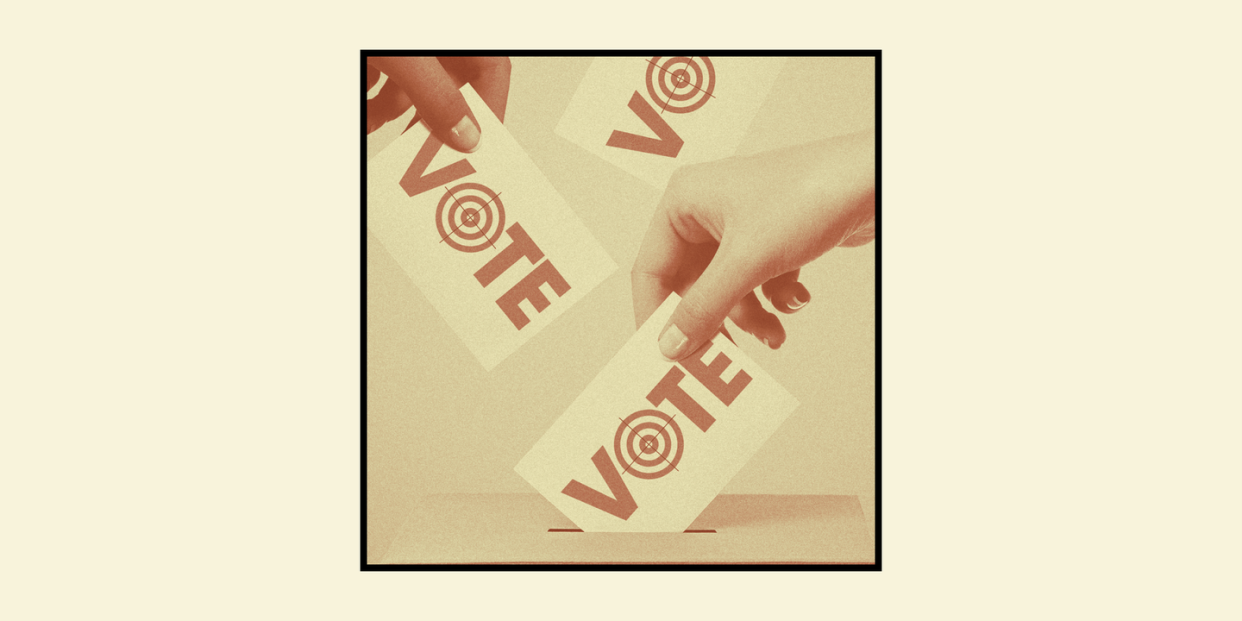Your Vote Could Save Lives


In 2018, after the shooting at Stoneman Douglas High School in Parkland, Florida, Robyn Thomas, executive director of the Giffords Law Center to Prevent Gun Violence, wrote the following piece for O, The Oprah Magazine. In it, she urged Americans to vote for lawmakers who would pass legislation to reduce gun violence.
Four years later, in the wake of the deadly shootings in Buffalo, New York, and Uvalde, Texas, it feels like nothing has changed. Thomas says much more needs to be done to save lives from gun violence. She also argues, though, that it’s not completely fair to say that nothing has changed. “Since Parkland, 37 states have passed 280 good gun laws,” she says. “That’s a lot of progress at a state level—particularly in places like California, New York, New Jersey, and Delaware.” And there is no doubt that laws encouraging and promoting gun safety work. States that have passed stricter gun safety laws, like California, have lower gun death rates compared to states that do not have these protections in place.
Making change on a state level is key—and that means voting in elected officials who will pass legislation that keeps guns out of the hands of people who should not have them. As we approach the midterm elections in November of this year, read the below piece from Thomas to learn more about gun safety laws that can make a difference. Then, when you head to the polls, you can make sure the candidates who get your votes are aligned with the changes you'd like to see.
Fifty years ago, our country was in the midst of a public-health crisis. Record numbers of Americans were dying at the hands of fellow citizens wielding objects of lethal destruction. Those objects? Automobiles.
In 1968, almost 54,000 Americans died in car accidents. But in the decades that followed, something changed. Actually, several things. The federal government implemented new safety standards for highways—which led to guardrails, barriers, and other improvements—and for vehicles, which led to innovations like shatter-resistant windshields and airbags. States passed laws requiring the use of seat belts and child safety seats. And ordinary citizens, led by anguished mothers, rose up to promote public awareness of the risks of drunk driving—and insisted on legislation to punish people who got behind the wheel after one too many drinks.
On their own, none of these measures would have been enough to drastically reduce the number of fatalities on American roads. But together, that’s exactly what they did: There were 51 deaths per 100,000 licensed drivers in 1968; by 2015, that number had dropped nearly 69 percent, to 16.
So now we turn our attention to a new public-health crisis. In 2016, guns took the lives of 38,658 Americans. [Editor’s note: In 2020, that number was 45,222.] They’re the third-leading cause of death for American children ages 1 to 17 [Editor’s note: In 2020, firearms were the leading cause of death among children under the age of 19]; in fact, the first five months of 2018 were deadlier for U.S. schoolchildren than for U.S. troops in combat zones. Every year high schools across the country park mangled cars on their grounds as a reminder to teen drivers to be safe. Yet every day when we send our kids to school, we’re asking them to put their lives at risk.
And school shootings are only a small part of the tragedy wrought by guns. In 2016, 59 percent of gun deaths in the U.S. were suicides. Firearm homicide is the leading cause of death for African American males between the ages of 15 and 34. Female domestic-violence victims whose abusers own guns are five times more likely to be killed than women whose abusers don’t. And then there are unintentional shootings, which in 2016 took 495 lives and injured more than 21,000, many of them children and teens.
For millions of Americans, the daily headlines about gun violence are grim enough to cause despair. The gun lobby is too deep-pocketed, we might tell ourselves, or Washington is too gridlocked to make meaningful change. But the truth is, this problem is not bigger than we are. Just like car accidents, gun deaths are fundamentally a health issue. And just like car accidents, they can be tackled by making practical changes on a number of fronts.

We need lawmakers across the U.S. to support these six policies—all of which have successfully reduced gun deaths:
Universal Background Checks
A 2017 study estimates that 22 percent of gun owners acquired their most recent weapon without a background check. That’s because current federal law requires such checks only for people buying from licensed firearms dealers. In most states, if you buy a gun from a private seller, at a gun show, or online, you’re good to go, no questions asked. Universal background checks, on the other hand, would apply to every purchase—and more than 90 percent of Americans support making them mandatory nationwide. This would help keep guns out of the hands of illegal buyers (felons, domestic abusers) and gun traffickers—and save lives without infringing upon Second Amendment rights.
Extreme Risk Protection Orders
In the months before the mass shooting at Marjory Stoneman Douglas High School in Parkland, Florida, the gunman managed to purchase multiple assault weapons despite warnings about his potential to commit violence, including a number of 911 calls made by and about him. Extreme risk protection order laws enable law enforcement or family members to ask a court to temporarily remove a person’s guns. Following the Parkland shooting, eight states, including Florida, passed these lifesaving laws.
Domestic-Abuser Firearm Bans
Domestic violence assaults are 12 times more likely to result in the victim’s death if they involve a gun. Of the 10,018 female intimate-partner homicides between 2003 and 2014, more than half were committed with firearms. Twenty-nine states have laws prohibiting anyone convicted of a misdemeanor domestic violence offense from purchasing or possessing guns. That leaves 21 states to go.
Child-Access Prevention Laws
We put childproof caps on aspirin bottles, yet for many kids, getting their hands on a gun is as easy as opening a closet door. In the future, smart guns—employing technology like fingerprint scanners that are able to be fired only by authorized users—may be widely available. For now, though, more than four million young children and teens have easy access to at least one gun in their homes. Child-access protection laws play a critical role in keeping kids from harm by holding gun owners liable for failing to safely secure their firearms. One study found that unintentional firearm deaths among children under age 15 fell by 23 percent in states where such laws had been in effect for at least a year.
Urban Gun Violence Intervention Programs
Black men make up about 6.5 percent of the U.S. population, yet account for more than 50 percent of gun homicide victims. Intervention programs interrupt cycles of violence and retaliation by providing outreach and opportunity to the most at-risk members of the population before they pick up a gun. In cities including Boston; New Haven, Connecticut; and Richmond, California, urban violence intervention programs have reduced homicides by up to 60 percent.
Regulations on Assault Weapons and Large-Capacity Magazines
After the federal ban on assault weapons expired in 2004, states became responsible for regulating these dangerous military-grade weapons. Limiting access to them and to large-capacity ammunition magazines would make it much more difficult to inflict the kind of devastation that the Las Vegas shooter did last October, firing more than 1,000 rounds, which killed 58 and wounded hundreds more, in a matter of minutes. Seven states have banned assault weapons, while nine have placed limits on large-capacity magazines.
Gun safety laws have tremendous power. The commonsense legislation California has implemented over the past 25 years, including an extreme risk protection order and limits on large-capacity magazines, has cut its gun-death rate by more than half. And since the Parkland shooting, 57 new gun laws have been signed in 26 states—a signal that the gun lobby’s hold on American politicians is weakening. Enacting these critical policies in more states and, ultimately, at the federal level will save thousands of innocent lives.
Fifty years ago, we saw that too many futures were being cut short by car accidents. And we didn’t throw up our hands. We didn’t write off the problem as inevitable. We didn’t accept that endangering our fellow citizens was a freedom afforded us by the Constitution. Instead, we took action—action that has since prevented hundreds of thousands of deaths. We can do the same with gun violence.
On Tuesday, November 8, 2022, we can go to the polls and vote for leaders who’ve pledged their commitment to passing effective gun-safety laws. If enough Americans choose to make saving lives a priority, there will come a day when we look back and wonder what took us so long.
You Might Also Like

